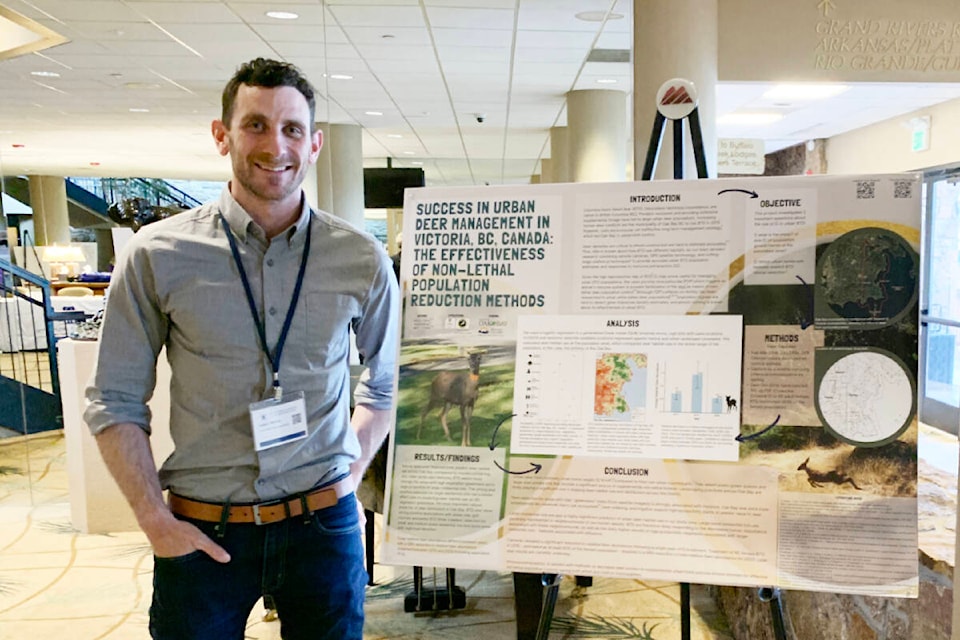Oak Bay’s immunocontraceptive initiative to help manage the local deer population was in the international spotlight last month.
The University of Victoria team working with Urban Wildlife Stewardship Society on the deer management plan shared their research at an international conference on Wildlife Fertility Control in Colorado last month.
Wildlife veterinarian Dr. Adam Hering presented Dr. Jason Fisher’s work, highlighting data around habitat use and the fawning rate reduction.
The opportunity to present these findings at an international conference underscores one of the key points of the research here and in other areas: sharing information.
“One of the goals of sharing our findings was to summarize our work to date and to make it accessible to other communities here in B.C., and farther afield,” notes UVic PhD candidate Alina Fisher, one of the research team working with UWSS in Oak Bay.
“The conference included researchers not only from Canada and the United States, but also from other countries, and so the ability to make connections and see how similar work is going in other countries has been a great opportunity.”
Local research indicates that deer aren’t spread evenly throughout Oak Bay, but tend to be found in areas with lots of green space and large lots with an abundance of vegetation to graze on. Additionally, the immunocontraception application was showing a reduction in fawning rates by about 60 per cent after the first year.
Local accolades for volunteer efforts
The UWSS’s efforts have also been in the spotlight on the local stage. During Volunteer Week, the District of Oak Bay acknowledged the society’s extensive volunteer work with the urban deer project, particularly their efforts “to create a humane approach to reduce the impact of deer in the urban context and, further, to manage an urban deer population, based on best scientific practices and ground-breaking research, including tracking, monitoring, capture and administration of immuno-contraception.”
Not only has volunteerism through the Urban Deer Management program seen a 61 per cent reduction in the birth of new fawns, it “places the UWSS and Oak Bay at the forefront of humane urban deer management in the Province of British Columbia and in Canada.”
Spring fawn alert
While Oak Bay residents will likely see fewer fawns this year, it’s still fawning season, and that means it’s time to be alert to deer’s unique behaviour.
- If you see a fawn, leave it alone – momma is likely nearby and will return when you leave. DO NOT touch the fawn. If it appears cold, weak, thin, injured, bleats repetitively, or if the mother has not returned to a seemingly healthy fawn for more than eight hours, call WildARC.
READ MORE: 5 timely tips for spring fawning season
To learn more about the UWSS, tips for sharing our space with deer, and Oak Bay’s deer management research, visit uwss.ca
